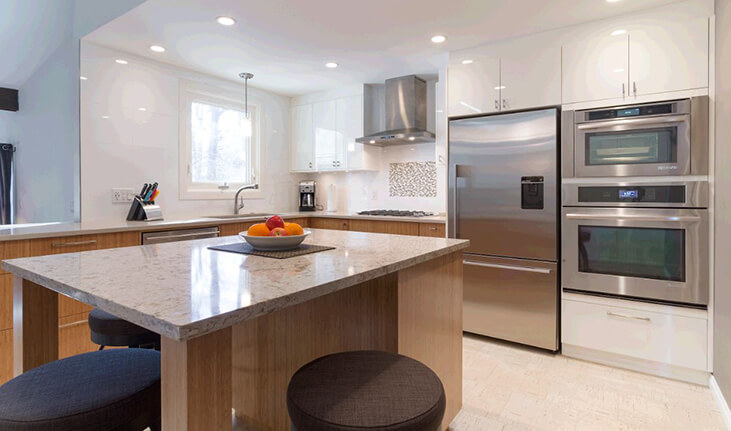The Renovation Process
How Things Work During a Project
Once your project gets underway, you and your renovator need to work closely together to make sure that everything goes as smoothly as possible.
Many of the responsibilities of both the renovator and the homeowner will have already been spelled out in the contract. Before the work actually starts, it’s a good idea to sit down with your renovator and review this in detail. Good communication is often the key to a good renovation experience.
Before the Work Begins
- Discuss the renovator's requirements for the work. including access to electricity and water on a regular basis, delivery and storage of building materials, and disposal of wastes.
- Determine the ‘rules of the house’ for the work crew. Clarify access to bathroom facilities and eating areas, as well as kitchen privileges, if any, and also which parts of the house are off limits. Set out your smoking policy and if you permit music in the work area.
- Verify that municipal permits and approvals have been obtained as needed. The contract may stipulate that your renovator will do this; however, the ultimate responsibility rests with you, the homeowner.

Making changes once the work starts
Even with the best-planned renovation, some things may need to be changed once the work is underway. This is perfectly normal, and there are well-proven methods for dealing with changes.
Change Orders
The larger and more complex a renovation project, the more likely it is that you may want to make changes to the initial contracted plan as the work progresses. For instance, once you see new flooring in place, you may decide to have it installed in other rooms as well. Or you may see a fixture or finishing that you prefer to the ones initially selected and listed in your contract.
These sorts of changes are perfectly normal and are managed through documents called "Change Orders."
A Change Orders is a mini-contract that defines the altered or additional work, including the payment terms. Change orders need to be signed by both you and your contractor and should include payment arrangements specific to the work covered by the change order. Once signed, Change Orders become part of your contract with the contractor. Always make sure that, if you ask the contractor to make a change, this is properly documented and signed-off by both parties.

Contingencies
There are renovation situations where some aspects of a project cannot be accurately determined until work is underway. To manage such situations, renovation contracts will often set aside a budget "contingency" – an amount of money held in reserve in the event that it is needed.
For example, the contractor may be uncertain about the condition of the roof sheathing underneath your shingles, but can’t determine this until the existing shingles have been removed. To cover this, an estimate for the costs involved if some or all roof sheathing must be replaced would noted in your contract, but this would be subject to your later approval, only if the extra work in needed. If the sheathing was fine, the contingency would not be approved and the money not spent.
A contingency budget should always be linked to a specific aspect of the project and subject to your approval before becoming active.
Hidden deficiencies
During a renovation project, your contractor may find problems that could not have been reasonably anticipated beforehand. For instance, dangerous electrical wiring from a previous renovation, rotted wood due to old leaks, or lead flashing under the old roof shingles.
Where there is potential for such hidden problems, your contract will most probably include a clause which states that the agreed price does not cover hidden deficiencies. Should such a problem be found, the contractor will normally alert you to the problem, ask for your direction on how to deal with it, and then determine the cost of the additional work needed. You will need to approve this additional expenditure before the work can begin. Once you have approved the change, it becomes part of your contract.
